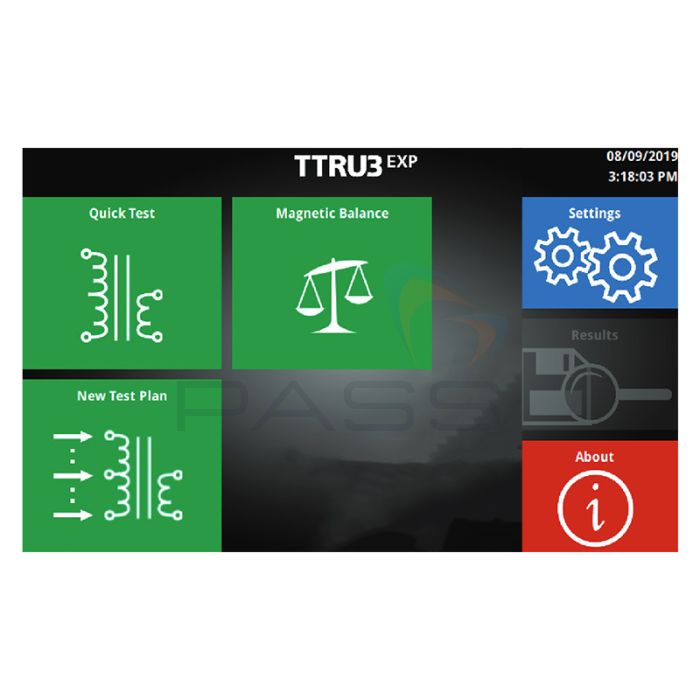Megger SW-VERSATILE TTRU3 Software - Phase Shift, Magnetic Balance or Kit
Be prepared for any situation with these Megger versatile software features. Utilise the software features to enhance your TTRU3 or have a look at these TTRU3 models.
Phase-shifting transformers can be tested quickly and easily with the phase-shifting option. For the most demanding transformers, individual tap phase shifts can be defined when combined with test plans & automatic OLTC.
Magnetic balance is an advanced diagnostic test typically performed during transformer construction used to detect problems such as inter-turn and inter-strand shorts, external loops around the core, and wrong interleaving joints. It is also useful in determining if a transformer core is magnetized and checking that the mechanical properties of the core and windings have not changed after a fault.
Three software options are available to choose from, Phase Shifting, Magnetic Balance, or the Versatile option which includes both the Phase Shifting & Magnetic Balance software.
Magnetic Balance
The transformer turns ratio is measured by applying line frequency AC voltage to one winding of a transformer and measuring the induced voltage on the corresponding winding. Magnetic balance excites the transformer the same way, but instead of measuring the induced voltage on the corresponding winding, the induced voltage on the same winding is measured.
Turns
Ration

The TTRU3 is capable of performing a magnetic balance test on any vector configuration in under 30 seconds. But what are the benefits of this method of testing?
Magnetic
Balance


Demag Confirmation
Transformer magnetization can be confirmed with magnetic balance.

Mechanical Integrity
Interstrand shorts closed loops around the core, and crushed insulation can be detected.
Example
The example below shows a typical transformer and a transformer that is magnetized. Note when the middle phase is excited, the magnetized transformer shows an imbalance in the other two phases.
- ■ X1-X0
- ■ X2-X0
- ■ X3-X0

Excited Phase
Typical

Excited Phase
Magnetized
Transformer Turns Ratio
In addition to the turns ratio, the expected phase shift of a transformer is evaluated when using a transformer turns ratiometer. Phase shifts typically occur in 30° increments and are represented by whole numbers from 0 to 11, but phase shifting transformers such as rectifiers have atypical phase shifts, and these phase shifts can be indicated many ways on the nameplate.
The TTRU3 is capable of performing turn ratio tests on any phase-shifting transformer by allowing for phase shifts to be entered concerning the secondary winding. But with all of the different ways phase shift is expressed, how do you know if the entered phase shift value is correct?

Angular Displacement
The easiest phase shift selection is when the nameplate specifies Angular Displacement. Simply enter the value on the nameplate after selecting the secondary winding!

Phase Shift on Secondary Winding
The next easiest phase shift selection is when the phase shift is specified concerning the secondary winding. Determine the standard shift using the examples above, and then add the phase shift indicated on the nameplate.

Phase Shift on Primary Winding
Lastly, phase shift can be specified from the primary winding. When specified from the primary, it can be leading or lagging, but this is not always indicated. It is best practice to enter the phase shift with a reversed sign: = - OR - = + If this does not provide correct measurements, enter the shift as it appears on the nameplate.

Product Range
- Megger SW-MAGNETICBAL Magnetic Balance SW
- Megger SW-PHASESHIFT Phase Shift (PRO/ADV option) SW
- Megger SW-VERSATILEKIT Phase Shift & Magnetic Balance SW
Call 01642 931 329 or complete the form:




